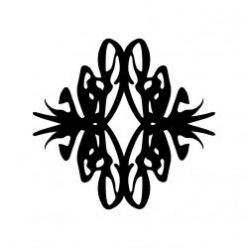About RIOT by Mark Napier
Riot is an alternative browser that crosses the virtual boundaries in the web: it breaks software-based rules of Internet domains and blends web pages together as users surf from site to site. For e.g., Playboy.com blends with whitehouse.gov, CNN.com with NPR.org. Images from different websites are mixed together into the live browser for audience to see on their screen. The images were mixed randomly. Just like its name, Riot disrupts those rules and is unconventional.

“When the mixtures of banner ads, government reports and personal declarations are taken as a jumbled whole, meaning falls apart. More becomes less” – The San Francisco Gate, Glen Helfand, July 22,1999
This artwork is about the line where human nature meets technology. Internet domain supposed to be rigid, defined by hardware and software, data and instructions. However, human can recycle those information to make something new in infinite possible ways. This artwork is against ownership, copyright and branding. (more)
About Mark Napier
He is an early adopter of the web, and work as web developer for startups such as Kaarme.com and Loan Pricing Corporation. He is also recognized as a pioneer in digital art and included in the Whitney Biennial in 2002. He taught 3D graphics programming at ITP in NYU.

Critique and Opinion
Rosa Menkman once visited the World Wide Wrong exhibition, and her experience about glitch…
“However, the work that made the biggest impression on me, UNTITLED GAME (1996-2001), which was a modification of the videogame QUAKE1, seemed the most incomprehensible. I could only understand it as irrational and void of meaning, and so I walked away from it, confused and titillated. In hindsight, I learned about myself in that moment – about my expectations and conceptions of how a videogame should work. The strange game seemed only to return me to my perspectives and expectations around the medium that it was failing to be. “
She thought the glitch art that she saw was weird, but at the end of the day, she found glitch art to be thought-provoking. The same experience happened to me as I read about RIOT by Mark Napier. The visual result of the alternative website is not bad, actually. It is interesting, but at first, what I was thinking was, “so, what?”.
Then after more research and reading different sources, I came to the conclusion that this RIOT is for us, the audience, to experience ‘digital riot’. It is also funny to imagine the elements from two entirely different sites such as Playboy.com and whitehouse.gov to be on the same page – it is like a self-created irony or a mock to both websites.
The fact that RIOT is not simply a static glitch art but an interactive glitch art amazes me. It is not just the technical skill of Mark Napier that caused my jaw to drop (create a website that combine websites in a website…how did he do that…) but also the intention as well as the deeper meaning of the art. Moreover, RIOT also serves as “glitch art generator” too for those who accessed the website. Isn’t that utterly cool?
I don’t think glitch art is popular enough these days (that was I observe from my surroundings). Hence, glitch art has to be explored more and to be made more popular. Just like Rosa Menkman said, “focusing on the glitch…makes it possible to think through some of the more interesting political and social uses of the glitch within the field of digital art.”
It is definitely true that “a glitch…is not always strictly a result of a technical malfuntion.”


Excellent. I am really pleased to see how you were able to relate your impression of Riot with Menkman’s first impression of glitch through Jodi.org’s “Untiltled Game.” It makes me think that whenever we encounter something new and different, we immediately feel confused and bewildered. However, these kinds of encounters often turn into the most impressionable ones and you did a great job describing that experience. Glitch has actually become extremely popular, even artists such as Kanye West have explored it.